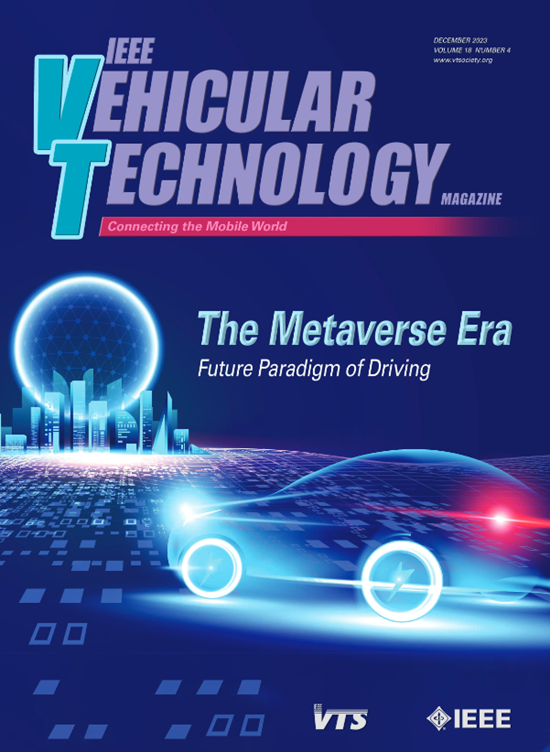下一代无线网络的多模高空平台站:选择机制、收益和潜在挑战
IF 7.2
2区 计算机科学
Q1 ENGINEERING, ELECTRICAL & ELECTRONIC
引用次数: 1
摘要
高空平台站(HAPS)概念最近受到了工业界和学术界的显著关注,以支持未来的无线网络。HAPS可以配备第五代(5G)及其他技术,如大规模多输入多输出(MIMO)和可重构智能表面(RIS)。因此,预计HAPS将支持农村和城市地区的大量应用。然而,这是以高能耗和因此更短的闲逛时间为代价的。为了解决这个问题,我们设想使用一种多模HAPS,它可以在不同模式之间自适应切换,以降低能耗并延长HAPS的漫游时间。这些模式包括用于增强计算、缓存和通信服务的HAPS超级宏基站(HAPS-SMBS)模式;用于主动通信的HAPS中继站(HAPS-RS)模式;以及用于被动通信的HAPS-RIS模式。这种多模HAPS确保了操作主要依赖于无源通信有效载荷,而只有在必要时才切换到能量贪婪的有源模式。在这篇文章中,我们首先简要回顾了HAPS与其他非地球系统的特征,然后阐述了所提出的不同HAPS模式。随后,我们展示了设想中的多模HAPS,并讨论了其优点和挑战。最后,通过实例验证了多模效率。本文章由计算机程序翻译,如有差异,请以英文原文为准。
Multimode High-Altitude Platform Stations for Next-Generation Wireless Networks: Selection Mechanism, Benefits, and Potential Challenges
The high-altitude platform station (HAPS) concept has recently received notable attention from both industry and academia to support future wireless networks. A HAPS can be equipped with fifth-generation (5G) and beyond technologies such as massive multiple-input multiple-output (MIMO) and reconfigurable intelligent surface (RIS). Hence, it is expected that HAPS will support numerous applications in both rural and urban areas. However, this comes at the expense of high energy consumption and thus shorter loitering time. To tackle this issue, we envision the use of a multimode HAPS that can adaptively switch among different modes so as to reduce energy consumption and extend the HAPS loitering time. These modes comprise a HAPS super macro base station (HAPS-SMBS) mode for enhanced computing, caching, and communication services; a HAPS relay station (HAPS-RS) mode for active communication; and a HAPS-RIS mode for passive communication. This multimode HAPS ensures that operations rely mostly on the passive communication payload, while switching to an energy-greedy active mode only when necessary. In this article, we begin with a brief review of HAPS features compared with other nonterrestrial systems, followed by an exposition of the different HAPS modes proposed. Subsequently, we illustrate the envisioned multimode HAPS and discuss its benefits and challenges. Finally, we validate the multimode efficiency through a case study.
求助全文
通过发布文献求助,成功后即可免费获取论文全文。
去求助
来源期刊

IEEE Vehicular Technology Magazine
ENGINEERING, ELECTRICAL & ELECTRONIC-TELECOMMUNICATIONS
CiteScore
14.10
自引率
1.20%
发文量
66
审稿时长
>12 weeks
期刊介绍:
IEEE Vehicular Technology Magazine is a premier publication that features peer-reviewed articles showcasing advancements in areas of interest to the IEEE Vehicular Technology Society. Our scope encompasses theoretical, experimental, application, and operational aspects of electrical and electronic engineering relevant to motor vehicles and associated land transportation infrastructure. This includes technologies for terrestrial mobile vehicular services, components, systems, and auxiliary functions within motor vehicles, as well as components and systems used in both automated and non-automated facets of ground transport technology. The magazine focuses on intra-vehicular components, systems, and applications, offering tutorials, surveys, coverage of emerging technology, and serving as a platform for communication between the IEEE VTS governing body and its membership. Join us in exploring the latest developments in vehicular technology.
 求助内容:
求助内容: 应助结果提醒方式:
应助结果提醒方式:


